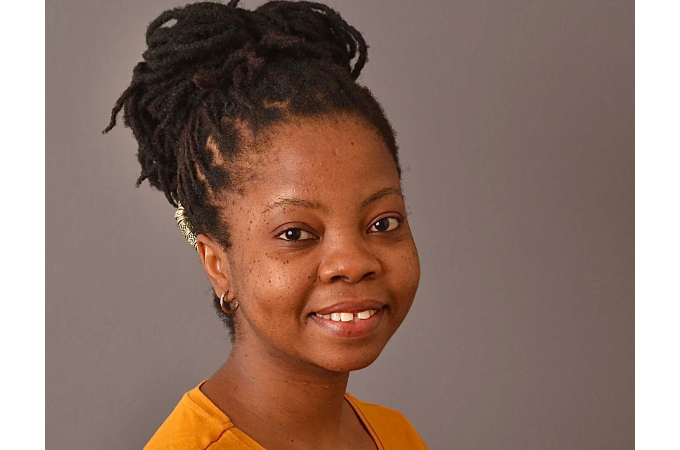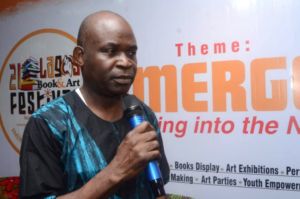
Every June, a ripple of excitement moves through the African literary world when the Caine Prize short list is announced. In a sense, it’s a gauge of what the contemporary African short story looks like; what styles, topics and moods reverberate and bubble to the surface. Granted, the shortlist not an objective measure, since a lot depends on which stories publishers submit and the taste of each year’s judges. Nevertheless, I look forward to each year’s list as it introduces us to fresh new voices and celebrates those we may already know.
As a writing teacher, I am especially interested in the stories from a craft angle: what is it about each one that got it selected, and how can craft help us unpack what makes each story masterful? I intend to ruminate on this, one story per week, and hope it provokes a conversation about the art of the African short story. These will not be standard reviews, nor a comparative take on the five stories; rather, I will highlight how each writer wields one or two craft tools to create an artful whole. The assumption is that readers will have read the stories. Go here to read more of my reviews of these stories.
***
The Distinctive Voice of “Five Years Next Sunday” by Idza Luhumyo [read the story here]
Once, I asked a magazine publisher what he was looking for when he read submissions, and he answered, “voice.” And what is that exactly? “It’s hard to define, but you know it when you see it,” he replied. Elusive, but true. I’m still not sure if he was referring to the voice of the author, or of the story, or of the characters, or their overlapping effect.
An author’s voice points to their particular style across a body of work, whereas a character’s voice, especially if the story is in first person, animates and drives the story. This is what we see in “Five Years Next Sunday,” and it is, for me, the most powerful and pleasurable aspect of the story. What makes this narrator’s voice so idiosyncratic? I’d like to delve into this, not so that we copy Idza Luhumyo, (as if we can!) but so that we too may make more deliberate and daring stylistic choices.
Her most obvious tool is the use of very short sentences of three, four, five words at most, right from the start, one after another. This uncommon style immediately creates an unusual voice, signaling an unusual character. In the very first paragraph, the second, third and fourth sentences start with “they” and fifth and sixth start with “I.” The effect is incantatory, gesturing towards the narrator’s witch-like status, and it creates a sense of other-worldliness, of some kind of ritualized atmosphere.
Here’s another example: “He has friends. They are loud. They stare. They ask if it okay to reach out, touch my hair.” They, they, they. We get the sense of baying dogs surrounding the narrator and closing in.
The short sentences also have a simple sentence structure: subject, verb, object. “We are in the fourth year without rain. A sack of maize is gold. Water is divine.” This phrasing, which is used often throughout the story, sounds like that of a children’s picture book, and gives a deceptive sense of directness and simplicity. The story, however, is anything but simple. What adds complexity? The language itself is tends to be veiled: “Water is divine.” How? Why? What we do get is that this means more than it says. The simple sentence structure coupled with translucent wording creates a sense of enigma.
The voice is made more distinct by the unusual phrasing scattered throughout. Examples are: “What in him needs watering?” and “Open to the world, my hair is heavy.” Also, “… I will hum the shock …” and, “… my father’s eternal laugh still clinging to the air.” The poetic quality conveys the narrator’s unique perspective and personality.
The enigmatic tone is heightened by obscure details, such as, “… expectations of my quarter”; “… fourth year without rain”; siblings who have “never exchanged more than a few sentences”; and so on. What quarter? No rain at all? Why? And why don’t the siblings talk? By the time we read, “She has never forgiven me for choosing to become a caller; for growing the rain in my hair,” we finally understand that this is not quite this factual world we know.
What makes the fantastical elements believable is that Luhumyo takes the time and space to create an ordinary world; grounding the fantastical firmly in the everyday with commonplace details, language, and events such as the brothers’ mock fighting, the shopping, cooking Pilau for a guest, the named list of groceries, the possessiveness of Zubeda over her mzungu, the father’s blaming of the government, the parties at Seth’s house, and so on. Moreover, the very ordinariness of the mystical object – hair – despite it being unusually long and luscious, enhances believability.
Verisimilitude is maintained also because Luhumyo introduces the fantastical elements gradually, even as they intensify as the story progresses. By the time we enter the secret room filled with photos of black skin and hair, a real enough scene, we are ready, or have been prepared to believe because of prior fantastical elements, that the walls are lined with black skin and hair itself. The horrific image is heightened by its opposite: the dry, almost detached tone of the narrator.
Another marker of the narrator’s singular voice is the variance between the shorter sentences and brief scenes with dialogue on the one hand, and the long descriptive lists on the other. For example, her parents’ change of lifestyle is presented as one long list, as is the description of what will happen when she cuts her hair. These large chunks of description stand in stark contrast to the brief scenes and short sentences, enhancing the power of the Pili’s voice.
The author’s choice of words creates a narrator with unique insight into the other characters. The narrator immediately digs deep and reveals the characters to their cores. She immediately senses Seth’s emptiness and unquenchable thirst as well as Honey’s pleading eyes and admonished child’s disposition. As Pili’s friendship with Honey grows, she is wooed by Honey’s sadness and softness and wants to save her, which proves to be Pili’s undoing. She is just as needy as Seth and Honey, which is why she has a relationship with Seth to receive her mother’s love, and also cuts her hair because she falls for Honey who asks her to do so. She already has admitted that she would forgive Honey’s lies, as though, deep down, she knows what will happen. Her voice also expresses her vulnerability. Despite her insight, special powers and almost stoic demeanor, however, Pili cannot escape her destiny as a ‘caller’. “Love burns” is a prophecy.
We see therefore, that ‘voice’ is not merely an artistic flourish, but can also harnessed to reveal character, develop themes, and establish tone and atmosphere. In this case, the haunting tone complements the fantastical aspects of the story while enhancing their believability. Luhumyo brilliantly weaves all these elements together into a mesmerizing story of flawed individuals, need, love and greed: a heartbreaking mirror that reflects our neocolonial reality.










COMMENTS -
Reader Interactions